Designed by Chris Hardie and his team at Schmidt Hammer Lassen Architects (SHL) together with local architects Arcplus, Shanghai Library East is one of the largest new libraries in the world.
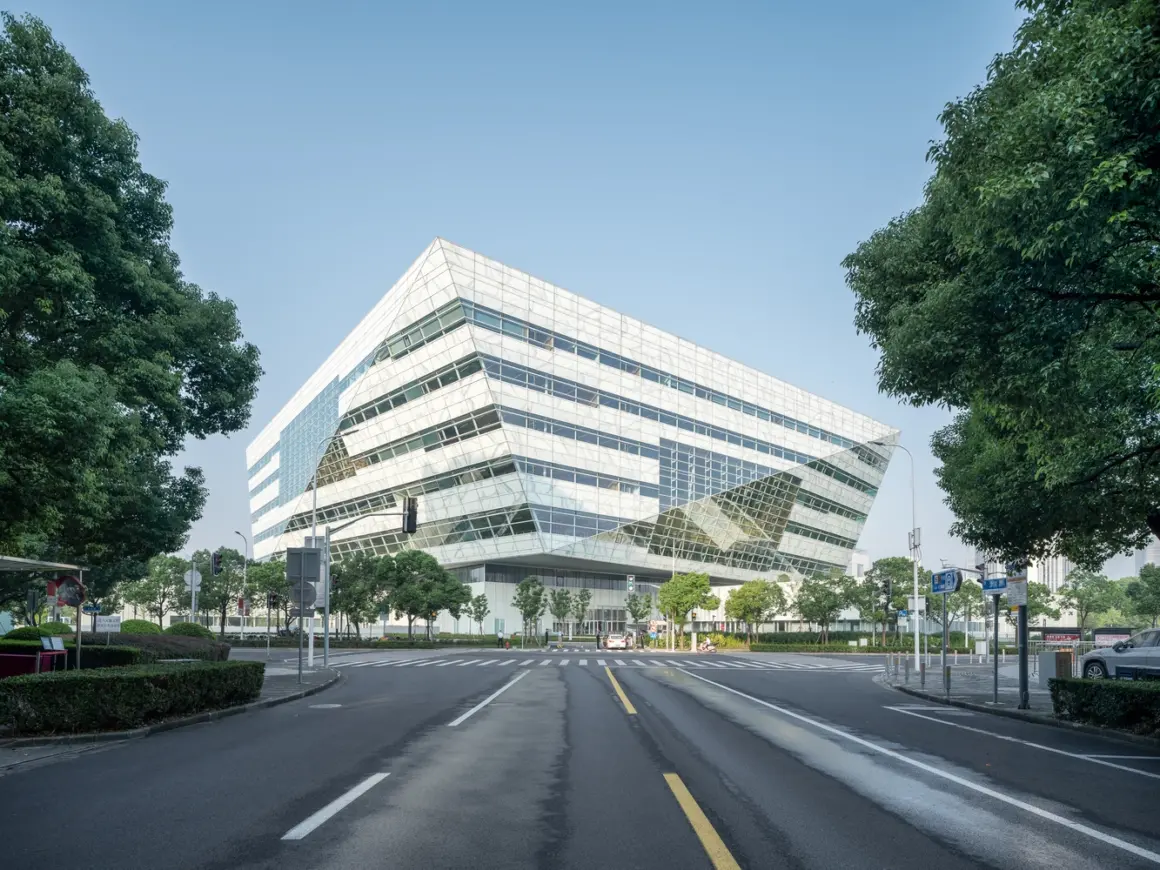
The library’s primary function as a center of art, culture, and technology-driven learning reflects the modern library’s rapidly changing raison d’être.
At the same time, its allusion to classical Chinese scholarship—the building’s form conjures the scholar’s rock of the ancient literati—anchors it in tradition.
“This important cultural center for the citizens of Shanghai embraces the idea of ‘collection to connection’—a space to bring people together. It’s the city’s gift to them,” says Chris Hardie, design director, and chief architect for Schmidt Hammer Lassen Architects.
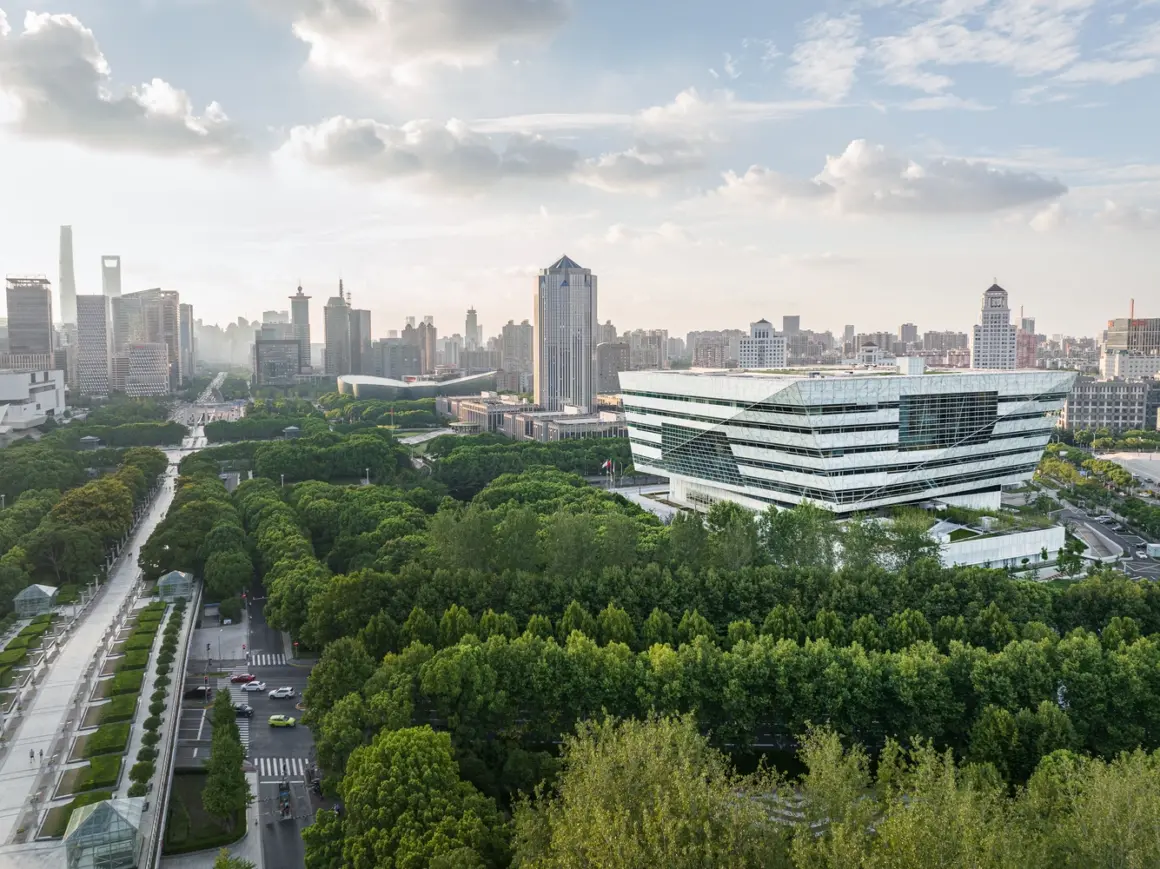
Taihu stones, or scholars’ rocks, served as muses for the Jin dynasty intelligentsia—sources of creative inspiration and meditation.
They were prized for their abstract qualities, perforated surfaces, eroded hollows, and unique textures.
In its architecture, interior design, and programming, Shanghai Library East evokes a scholar’s rock in a Chinese garden: a polyhedral stone enveloped in an emerald tree canopy; a naturally occurring network of interconnected interior spaces; a wellspring of knowledge, inquiry, and discovery.
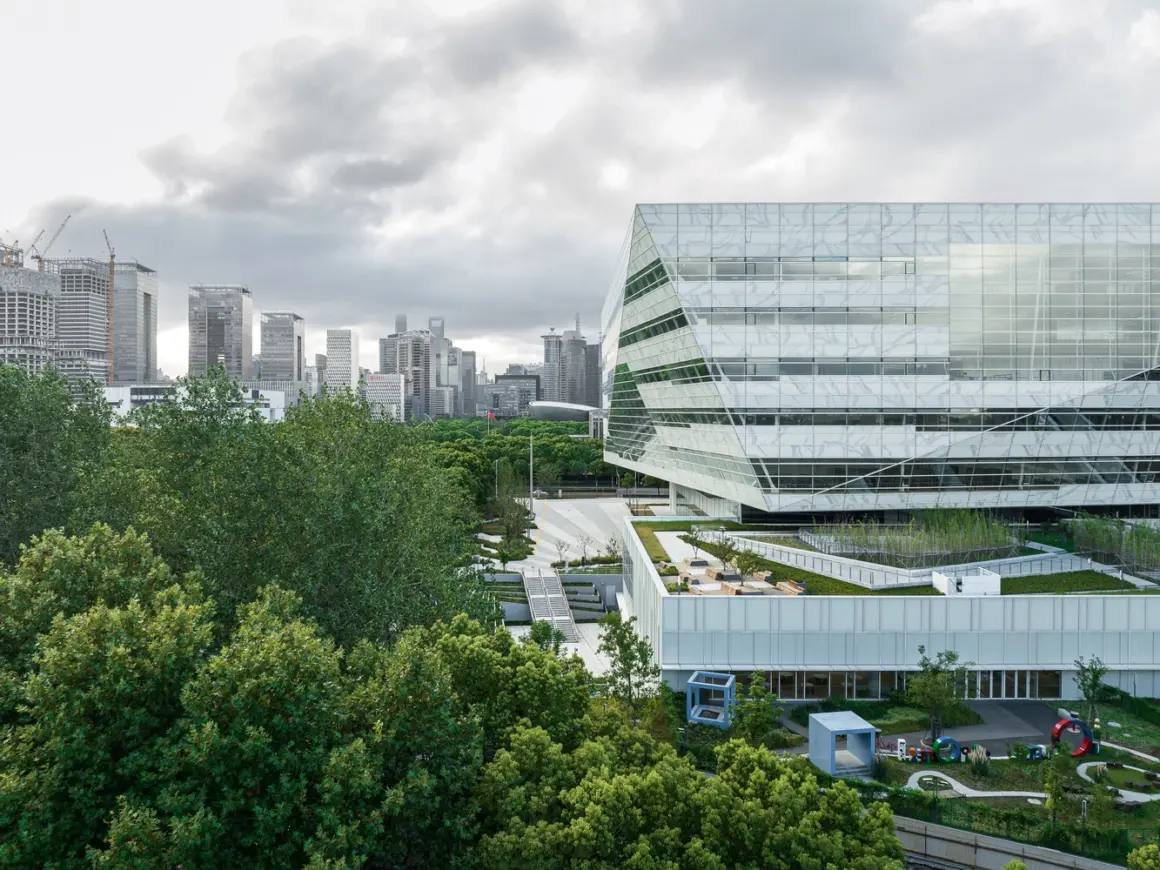
“This library was a unique opportunity to reinterpret a cherished Chinese symbol through architecture and design,” says project architect Jing Lin.
“In ancient times, scholars would gather around Taihu stones, deriving inspiration from their edges, curvatures, canyons, and tunnels, which seemed to shift when viewed from different vantage points.”
“Similarly, as visitors move about Shanghai Library East, their views of its interconnecting spaces shapeshift.”
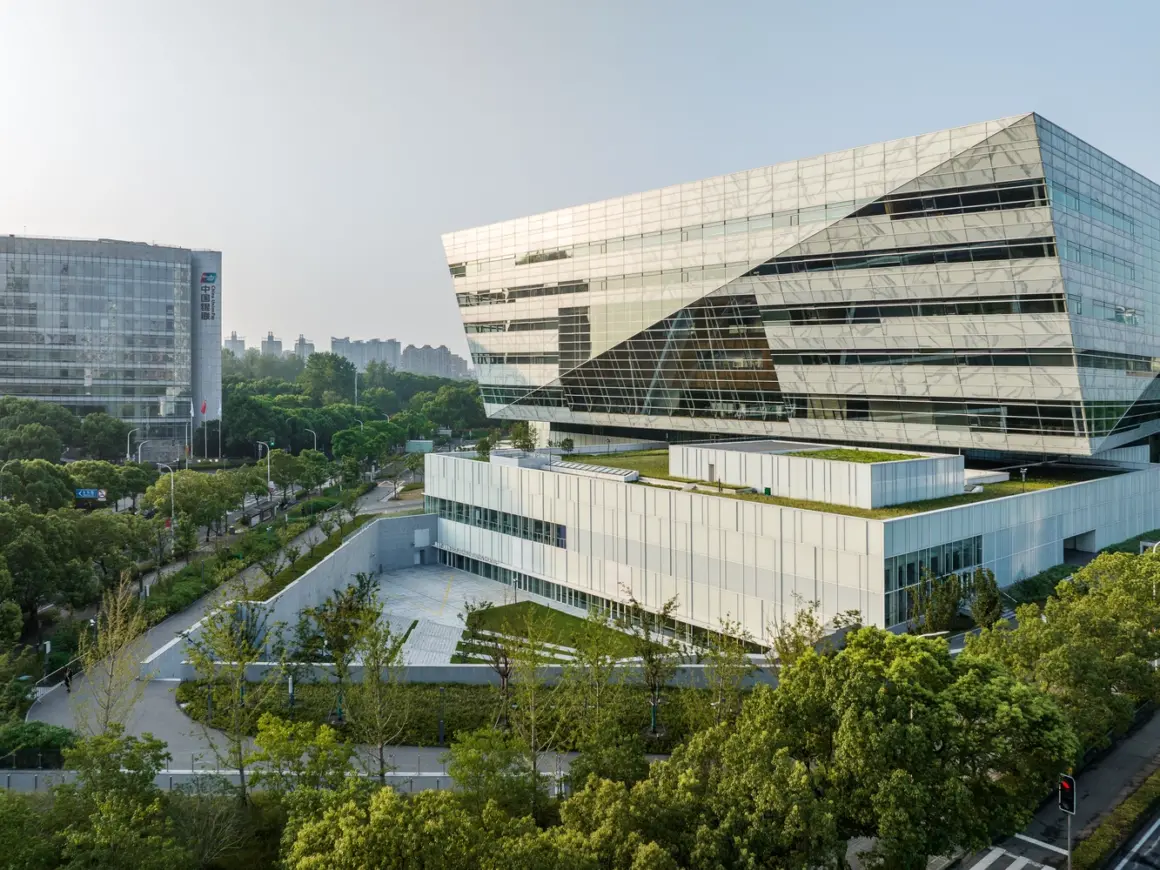
The library’s exterior pays homage to printed literature through an even subtler symbolism.
An abstract motif depicting 15 photographs of marble swirls “printed” onto the façade’s glass panels represents the library’s “cover.”
Arranged in horizontal bands of varying transparency, these etched panels allow light to penetrate deep into the building, illuminating the space—and, like a good book, enlightening the mind.
Although it houses multifarious books, Shanghai Library East will also host more than 1,200 lectures, seminars, performances, events, and hands-on activities for upward of 4 million visitors annually.
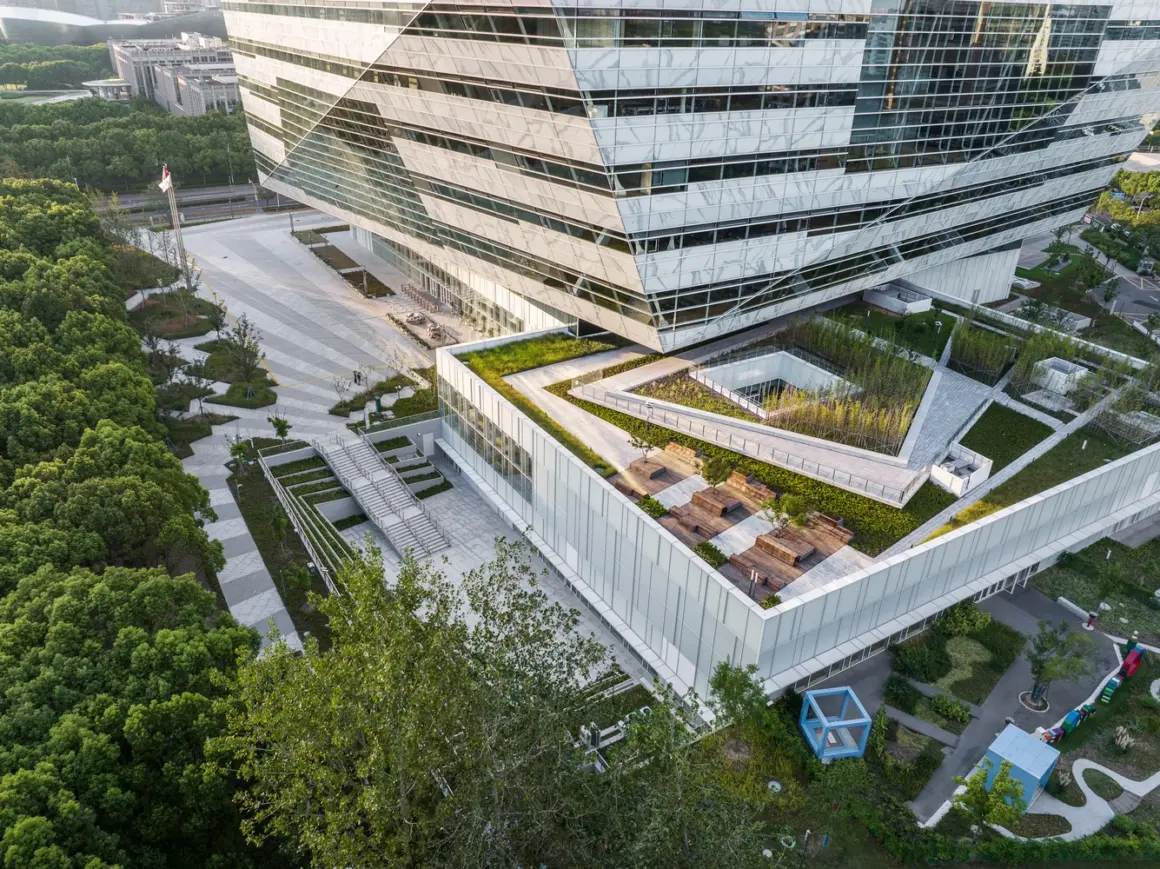
This panoply of programs will be facilitated by 115,000 square meters of open, flexible, and interconnected environments.
On the main level, a grand central atrium welcomes guests into a vast yet warm and inviting atmosphere of bamboo, oak, and terrazzo.
Overhead, the floors stack and interlock—an architectural strategy to visually connect each of the library’s seven levels.
The lower floor serves as an agora, or central plaza, hosting various events, exhibitions, a bookstore, and a café.
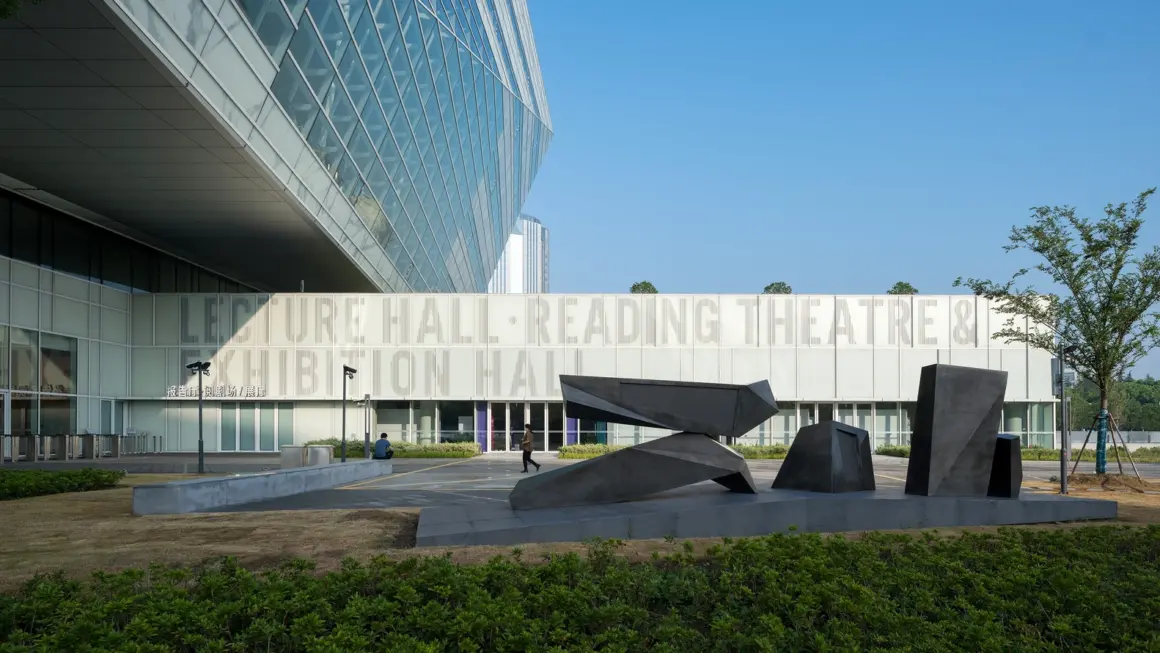
“Libraries have long formed the backbone of many communities, becoming an integral part of our lives. It’s why we refer to them as the ‘third space’—a highly personal place that exists between our home and our work,” states Hardie.
From the exterior, the library appears to “float” above two pavilions—one housing a 1,200-seat theater, exhibition, and events space; the other housing a children’s library with a central courtyard and outdoor play spaces.
Atop the pavilions are outdoor landscaped reading rooms with roofs to protect visitors from rain.
Visitors enjoy panoramic views of the iconic Shanghai skyline and Century Park, the city’s largest green space.
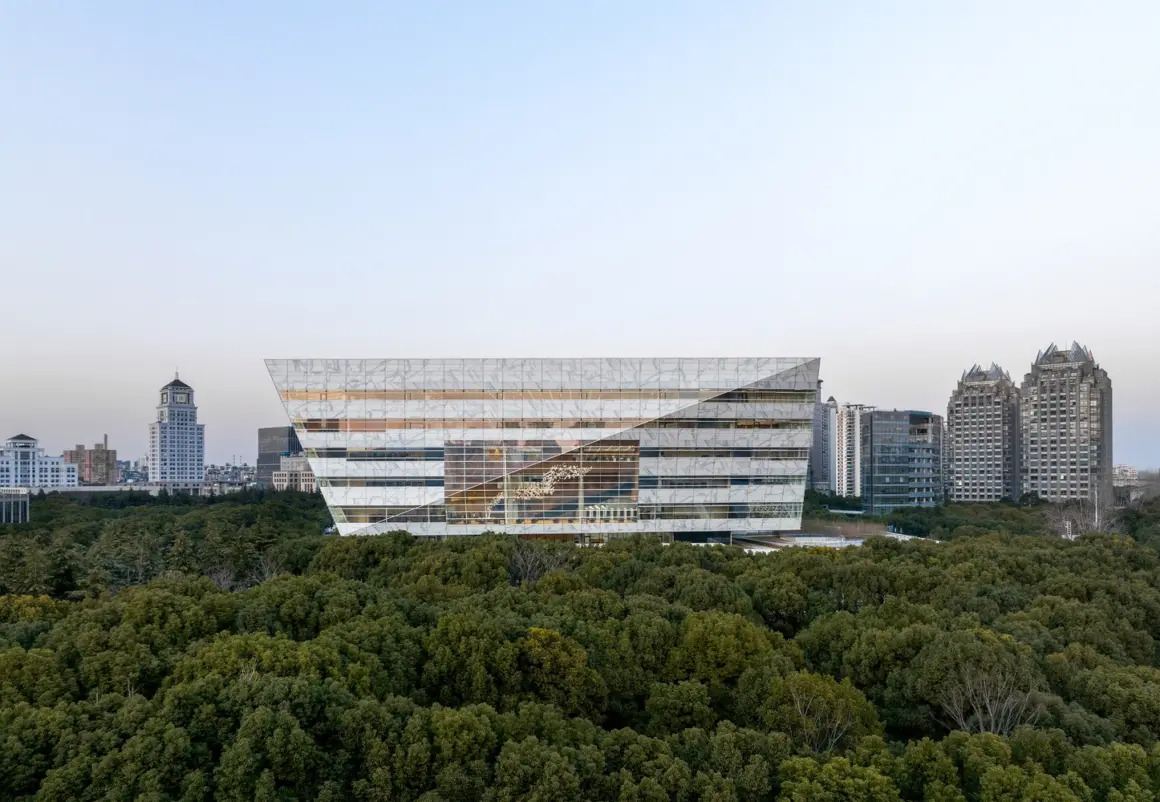
“The smart and hybrid Shanghai Library East is a new generation library. It is not only a place for storing and lending books, or a reading room, but also an open space for culture and art,” says Chen Chao, director of the Shanghai Library.
“Exhibitions, lectures, music, art, experiencing technologies, and even entering the library itself are seen as a kind of ‘reading’.”
Local artists were integral to the design process.
Ten contemporary artists from China and abroad — including Xu Bing, Gu Wenda, Shen Fan, Zheng Chongbin, Emily Floyd, Ni Youyu, Mia Liu, Plummer & Smith, Simon Ma and Yang Zhenzhong — created site-specific permanent installations.
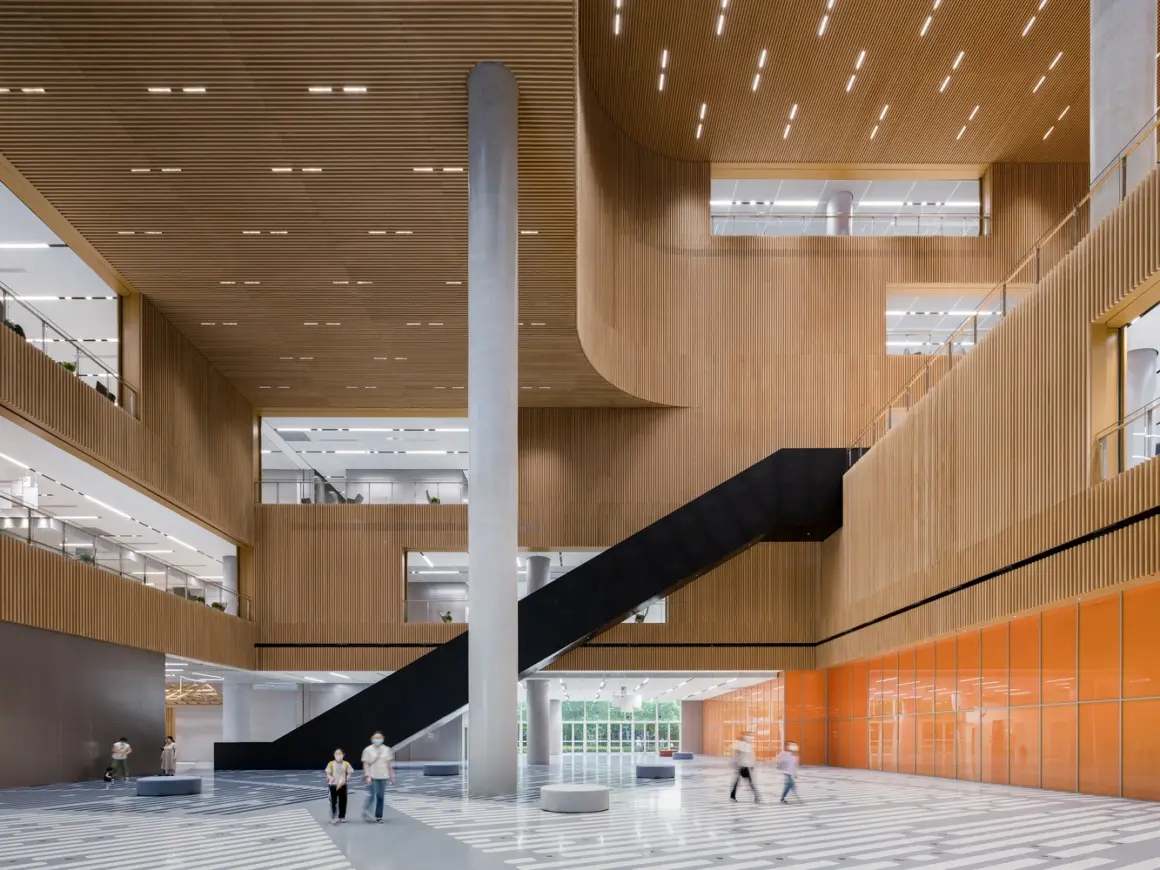
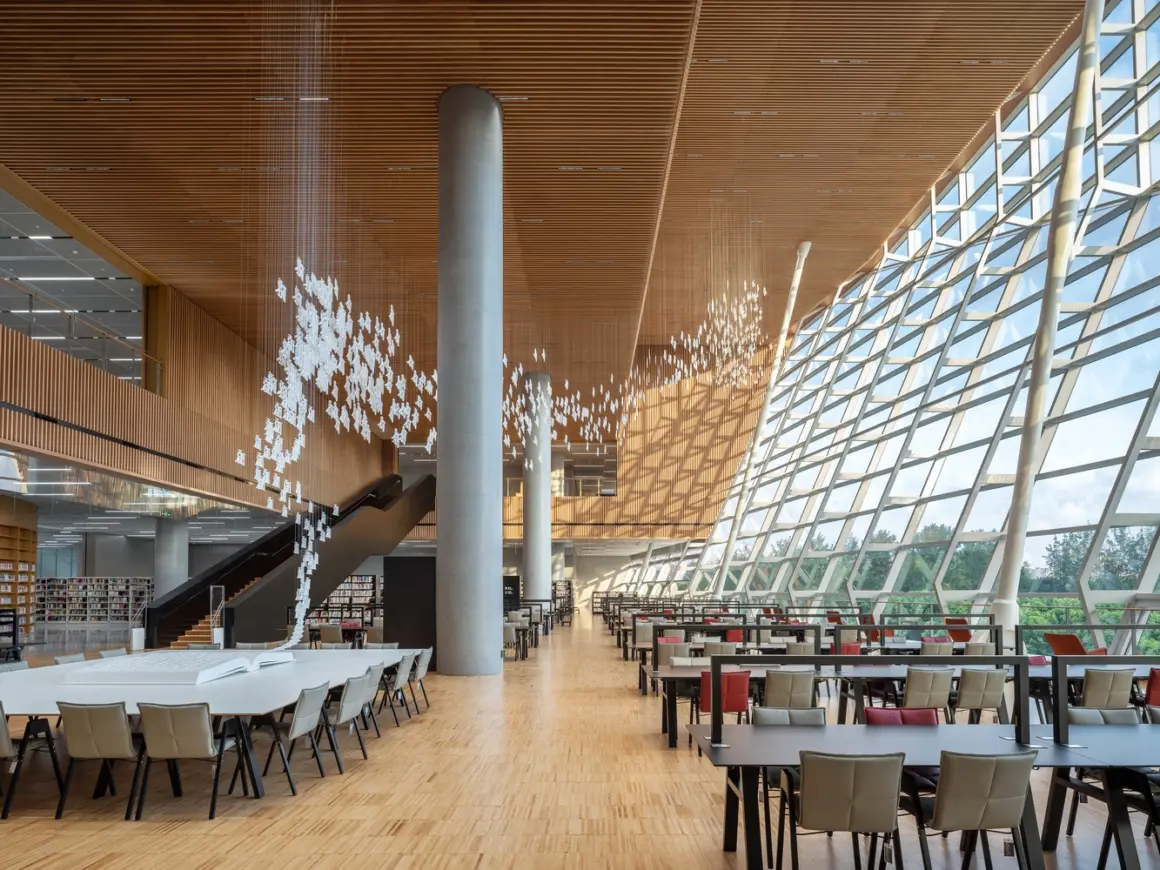
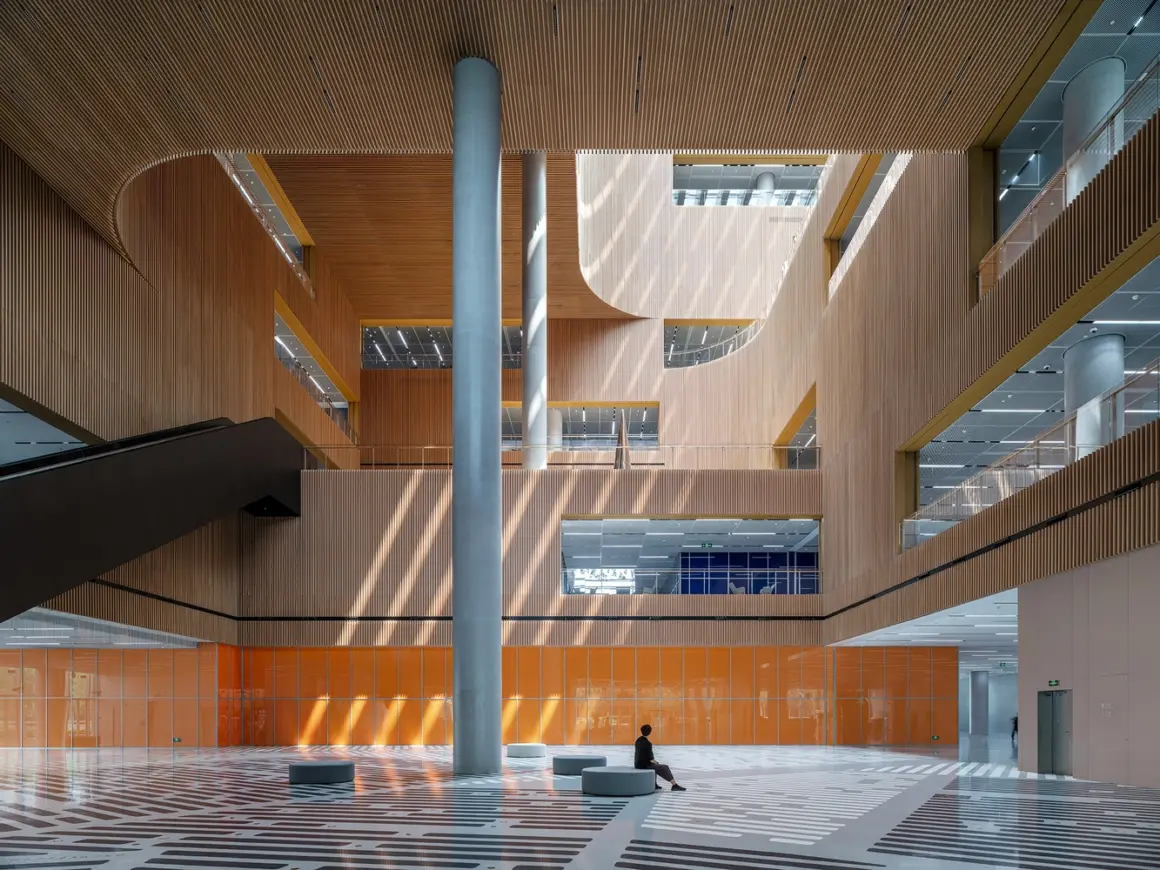
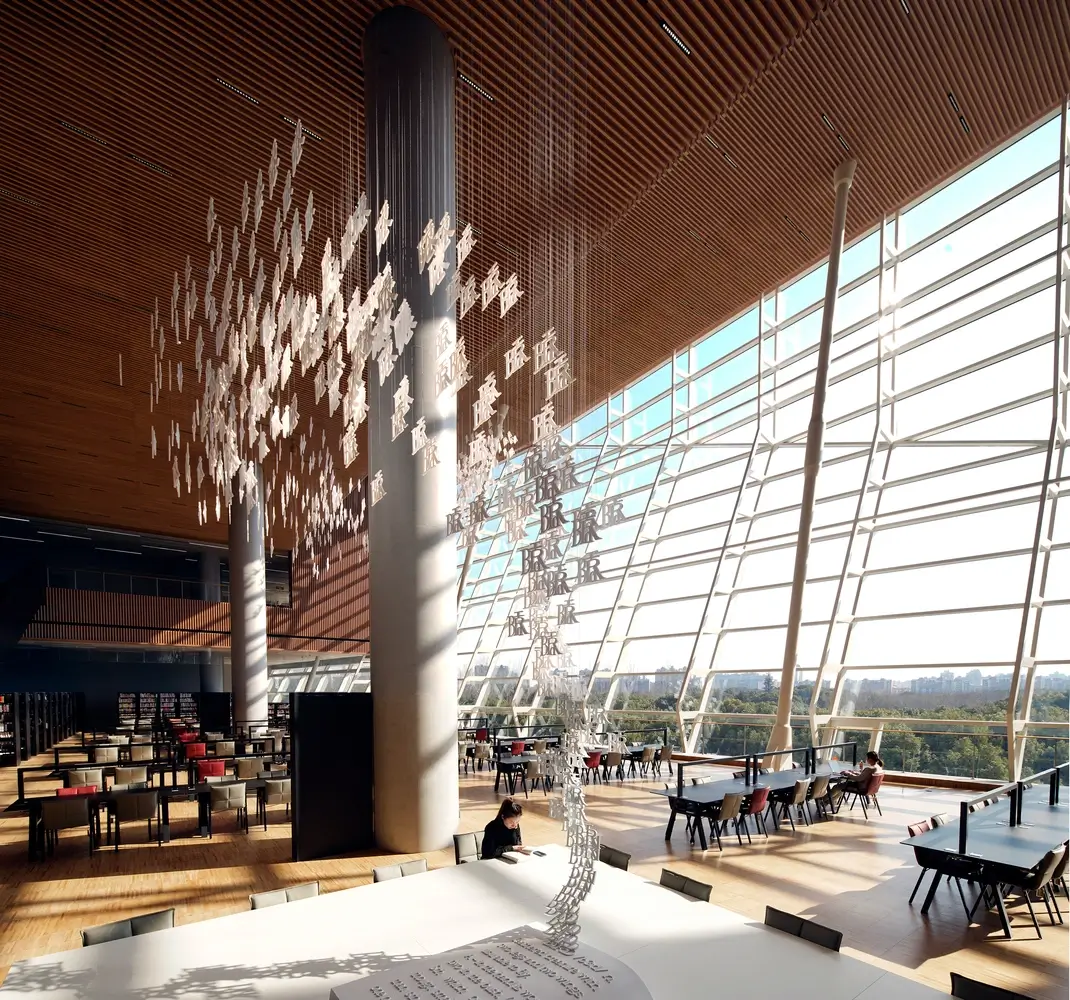
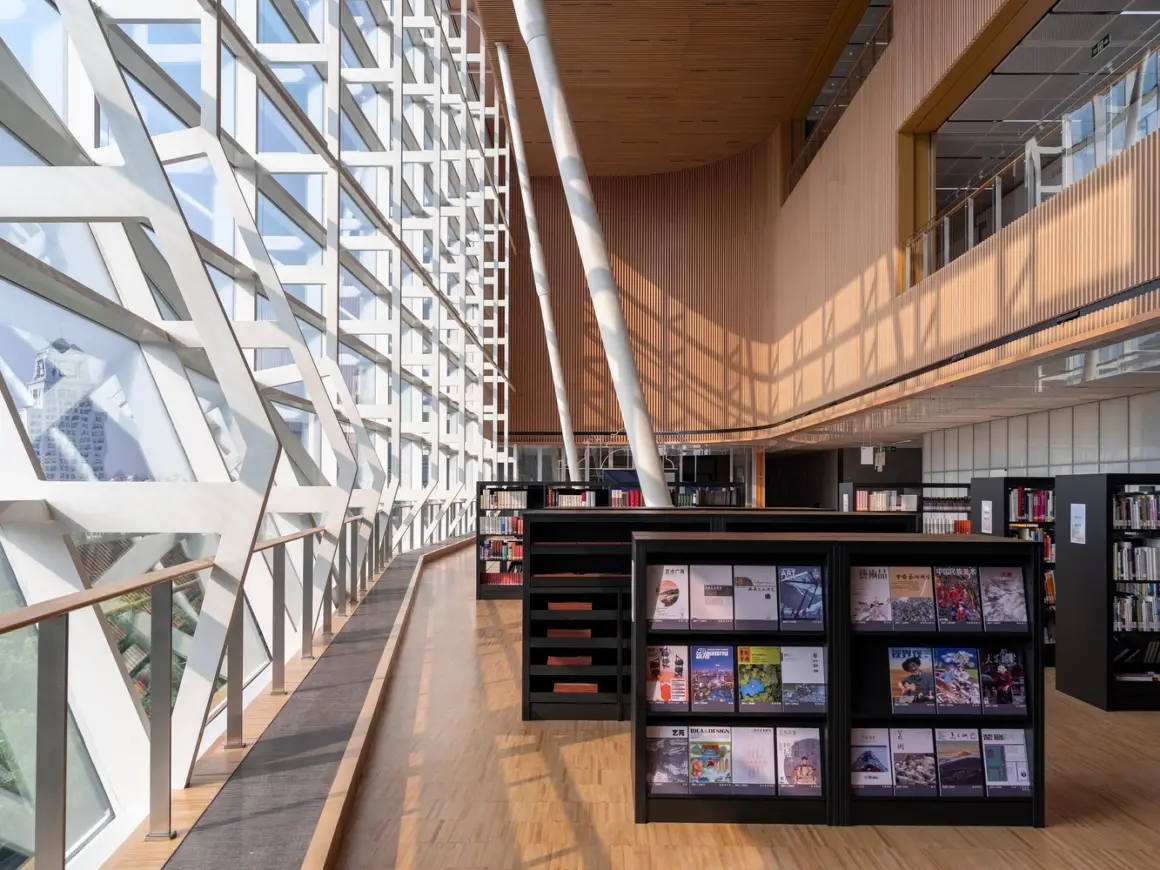
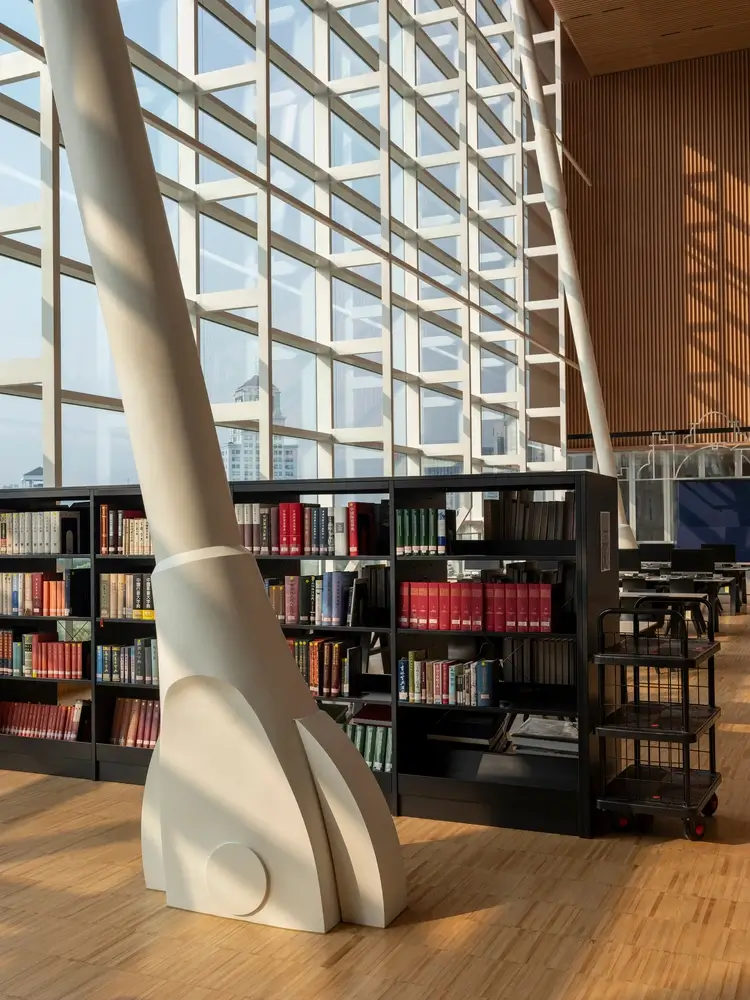
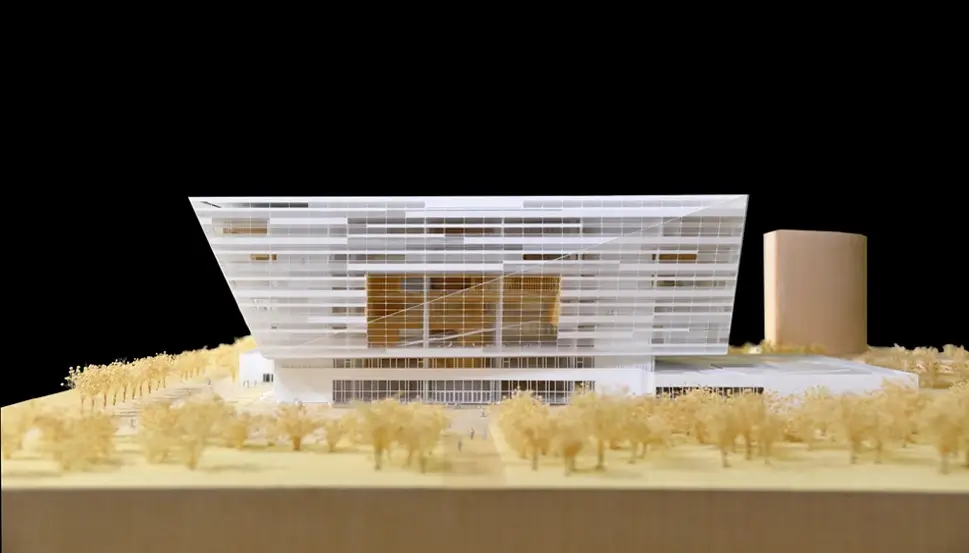
Project: Shanghai Library East
